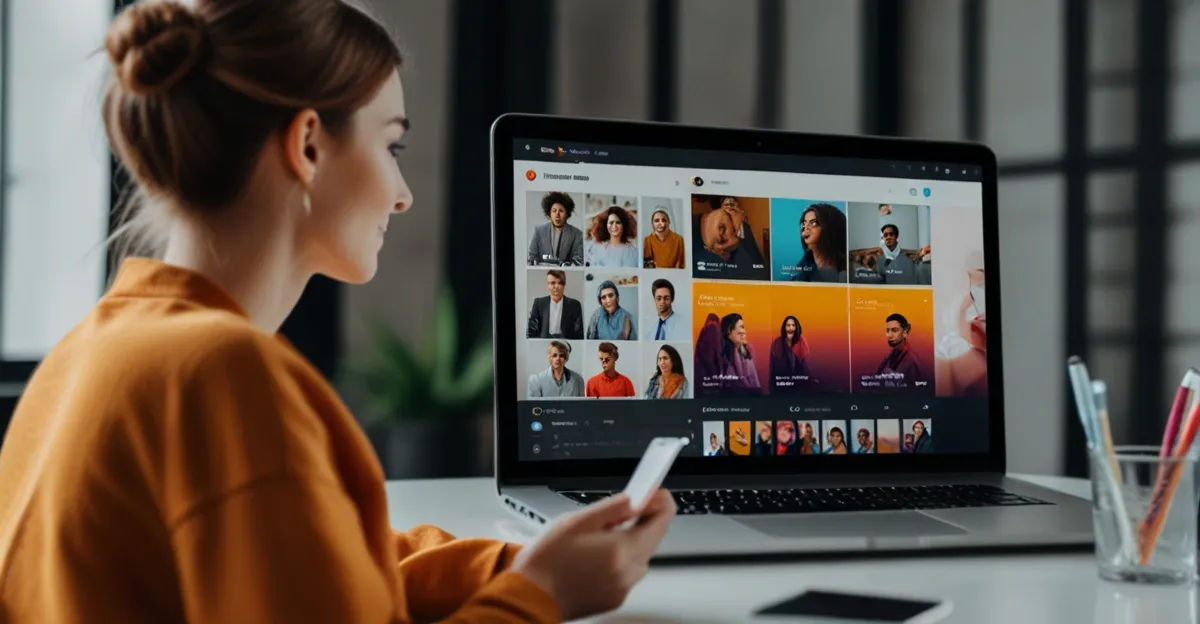Influencer marketing technology is transforming the way content creators engage with their audiences and develop their brands. Influencers are no longer just content creators; they have become cultural leaders who shape global conversations, consumer preferences, and brand loyalty. With 83% of consumers in metro cities trusting recommendations from influencers they follow, it is essential for these creators to adopt innovative technologies that enhance both their creativity and engagement. By leveraging the latest advancements, influencers can elevate their content, streamline their workflows, and connect with their audience in more meaningful ways.
The Importance of Influencer marketing technology
Integrating advanced technology is no longer a luxury but a necessity for influencers who want to push boundaries, differentiate their content, and remain relevant in the dynamic digital landscape. By harnessing the latest technological trends, influencers can elevate their content, streamline their workflows, and connect with their audience in more meaningful ways.
Harnessing AI-Powered Tools to Supercharge Creativity
Artificial intelligence (AI) has revolutionized the content creation process, making it easier for influencers to generate fresh ideas, optimize workflows, and enhance the quality of their output. AI-driven tools enable influencers to automate repetitive tasks, freeing up more time to focus on creative expression and engagement.
AI-Powered Content Generators
Platforms like Jasper.ai and Writesonic can generate high-quality blog posts, social media captions, and even video scripts based on simple prompts. These tools are invaluable for overcoming creative blocks and maintaining a consistent content schedule.
AI-Driven Design Tools
AI features on design platforms such as Canva and Adobe Firefly allow influencers to create stunning visuals, graphics, and animations with minimal effort. This enables influencers to produce polished, professional-looking content that stands out in crowded feeds.
Maximizing Social Media Analytics for Data-Driven Content Creation
Understanding the behavior and preferences of one’s audience is crucial for any influencer aiming to grow and retain followers. Social media analytics tools offer powerful insights into audience demographics, content performance, and engagement patterns, helping influencers fine-tune their strategies.
Audience Demographics
Tools like Hootsuite and Buffer provide in-depth analytics on followers, including age, gender, location, and interests. By leveraging this data, influencers can create highly tailored content that resonates with specific target groups.
Engagement Metrics
Monitoring likes, shares, comments, and click-through rates allows influencers to track the success of their content in real-time. This data helps pinpoint what type of content works best, enabling timely adjustments to ensure maximum reach and impact.
Engaging Audiences with Live Streaming
Live streaming has transformed how influencers interact with their audience. Platforms like Instagram Live, YouTube, and Twitch offer real-time, unfiltered communication with followers, creating a more personal and authentic connection.
Interactive Engagement
Live streams offer an opportunity for real-time interaction, whether through Q&A sessions, live polls, or challenges. This level of immediacy creates a memorable experience and fosters greater engagement.
Community Building
Regular live sessions can create a sense of community among followers, encouraging loyalty and long-term engagement. The real-time nature of live streaming also fosters authenticity, which is highly valued by today’s digital audience.
Innovating with Virtual and Augmented Reality
Virtual reality (VR) and augmented reality (AR) are emerging as powerful tools for storytelling and immersive content creation. These technologies allow influencers to offer unique, interactive experiences that go beyond traditional content formats, helping them stand out in an increasingly competitive landscape.
Immersive Product Demonstrations
AR can transform how influencers showcase products, allowing audiences to engage with items in an interactive, immersive way. For example, fashion influencers can use AR to let followers virtually try on outfits, enhancing the shopping experience.
Storytelling through VR
Virtual reality enables influencers to create immersive stories or experiences, from virtual tours to gamified content. This technology provides a unique way to engage audiences by offering an experiential approach to storytelling that leaves a lasting impression.
Staying Ahead by Adopting Emerging Technologies
To stay ahead of the curve, influencers must be willing to embrace cutting-edge technologies and experiment with new content formats. As platforms evolve, influencers need to remain agile, incorporating innovative tools and trends into their content strategies. By staying at the forefront of technological advancements, influencers can enhance their creativity, better engage with their audience, and maintain a competitive edge in the rapidly changing digital ecosystem.
Content Ideation and Trends
Identifying and capitalizing on trends is essential for staying relevant. Tools like BuzzSumo, AnswerThePublic, and Google Trends can help influencers discover popular content, find trending topics, and generate content ideas based on audience search queries.
Technology offers influencers unprecedented opportunities to revolutionize their content and deepen their connection with followers. From AI-driven tools that streamline creativity to the immersive potential of VR and AR, the digital landscape is ripe for innovation. Those who master these technologies will not only stand out but also set the pace for future trends in the influencer space.
FAQ’s
- What is influencer marketing technology?
Influencer marketing technology refers to tools and platforms that assist brands and influencers in managing and analyzing their influencer marketing campaigns. - How can influencers benefit from using technology?
Influencers can improve content creation, engage with their audience more effectively, and analyze performance using various technological tools. - What types of technology do influencers use?
Common technologies include AI content generators, social media analytics tools, live streaming platforms, and AR/VR applications. - How does AI improve influencer marketing?
AI can help streamline content creation, provide insights on audience engagement, and automate repetitive tasks for influencers. - What role does analytics play in influencer marketing?
Analytics help influencers understand their audience better, track content performance, and make data-driven decisions to enhance their strategies.
